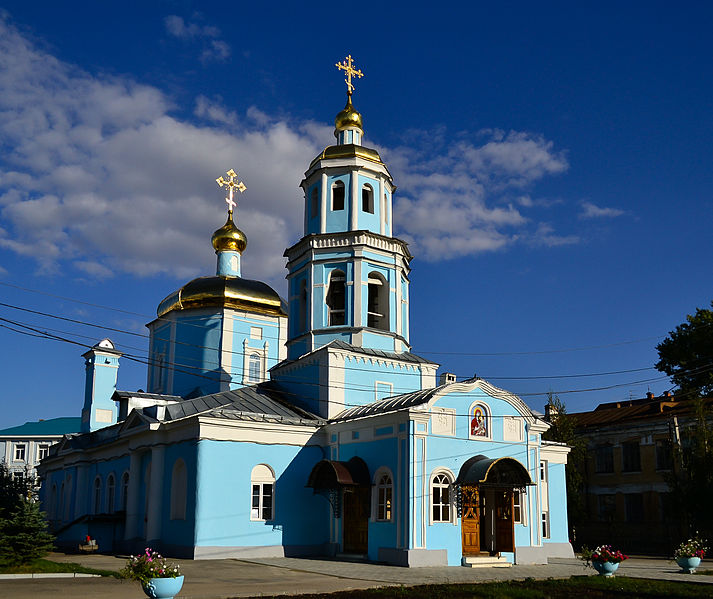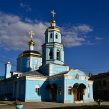
Moscow Using Sub-Ethnic Groups at Home and Abroad
Publication: Eurasia Daily Monitor Volume: 11 Issue: 66
By:

Most Western analysts accept as fundamental the ethnic divisions that were reified by Soviet leaders and consider Moscow’s divide and rule strategy only in terms of them, focusing for example on Russians and Ukrainians or Armenians and Azerbaijanis. But the Kremlin has never accepted as final its own official breakdown of the ethnic composition and instead, as part of its broader strategy at home and abroad, has routinely played up the status of groups few accept as distinct nationalities.
Two such groups are now in Vladimir Putin’s sights: the Kryashens, a Russian Orthodox subgroup of Kazan Tatars Moscow is using to rein in Tatarstan within the Russian Federation, and the Rusins, a sub-group of Ukrainians that Moscow is promoting as a lever against Ukraine from the west. Each of these cases is important in its own right, but together they highlight something far more significant: the Russian authorities continue to claim the right to decide what nationalities exist on the territory of the former Soviet Union and to play up or suppress them as it suits the Kremlin’s purposes.
Yet, Moscow’s efforts in this regard inevitably call attention to something the Kremlin specifically does not want people inside the Russian Federation or abroad to attend to, the fact that of all the nations in the post-Soviet regions, the ethnic Russians are the least integrated and have the most internal fissures that others or these communities themselves can exploit. The Cossacks and the Siberyaki are the most well known such groups. Though Moscow insists they are simply Russians, these communities are increasingly identifying themselves as something entirely different (see EDM, February 26; https://jamestownfoundation.blogspot.com/2014/03/cossackia-re-emerges-as-issue.html).
Moscow has been playing with the Kryashens for years. The name of the group comes from the Russian word for “baptized” and refers to those Kazan Tatars baptized after Ivan the Terrible conquered Kazan in 1552. Almost all Tatars and most scholars view them as a subgroup of the Kazan Tatars who number two million in the Republic of Tatarstan and approximately 5.5 million in the Russian Federation as a whole. But some of the Kryashens, encouraged by Moscow officials interested in reducing the total number of Kazan Tatars and provoking tensions in Tatarstan, now view themselves as a separate nation, although the number who do is not large. In the 2010 census, just under 35,000 did so (https://www.gks.ru/free_doc/new_site/perepis2010/croc/perepis_itogi1612.htm).
Moscow and especially the Moscow Patriarchate of the Russian Orthodox Church has now upped the ante, accusing the predominantly Muslim Kazan Tatars of discrimination and blaming “Islamist extremists” who supposedly enjoy the protection of Kazan for a series of recent fire bombings of Kryashen churches. Most Tatars view these charges as absurd or a provocation, but the Russian campaign continues and is likely to intensify in the coming weeks (for a detailed summary of Moscow’s efforts, see Arkady Fokin’s 5,600-word and heavily footnoted article, “The Kryashens as an Object of Nationality Policy” at ruskline.ru/analitika/2014/04/02/kryasheny_kak_obekt_nacionalnoj_politiki/).
The Rusins, who are also known as Ruthenians, represent both a more complicated situation and one that Moscow appears ready to exploit in the course of its moves against Ukraine. The Rusins, at least 10,000 of whom live in western Ukraine, number an estimated 1.2 million all told in neighboring countries. They are recognized as a separate nationality in Croatia, the Czech Republic, Hungary, Poland, Serbia and Slovakia, but the Ukrainian government has not, because most Ukrainians both officials and experts consider them to be a sub-group of Ukrainians.
Ukraine’s unwillingness to recognize the Rusins as a separate nationality, something that parallels Tatarstan’s unwillingness to do the same with the Kryashens, gives at least some of the Rusins a sense of grievance, which Moscow officials have willingly tried to exploit. The current crisis between the Russian Federation and Ukraine presents the latest and perhaps best opportunity the Rusins have had to exploit their ties with Russia. Simultaneously, this has been Moscow’s best chance to exploit its support for the Rusins as a distinct nationality.
As that crisis deepened, Petr Getsko, the coordinator of the Rusin movement in Ukraine, issued a public appeal to Russian President Vladimir Putin, calling for Moscow to intervene in Ukraine in order to protect the Rusins as “the last bastion of the Russian world.” He warned of a looming “humanitarian catastrophe” that he claimed was being fueled by Kyiv’s unwillingness to recognize the Rusins as well as its involvement in the destruction of Rusin culture (https://www.business-gazeta.ru/article/100398/; https://nazaccent.ru/content/11125-rusiny-ukrainy-obratilis-k-putinu-s.html).
According to Getsko, when the borders of the Soviet Union were shifted at the end of World War II, the Rusins wanted to be part of the Russian Soviet Federative Socialist Republic (RSFSR) not the Ukraine SSR, but Nikita Khrushchev blocked them and opened the way to Ukrainian atrocities. Such an argument, of course, has the effect of linking the issue of the Rusins to that of Crimea, an indication that it may originally have come not from the Rusins but from Moscow itself.




